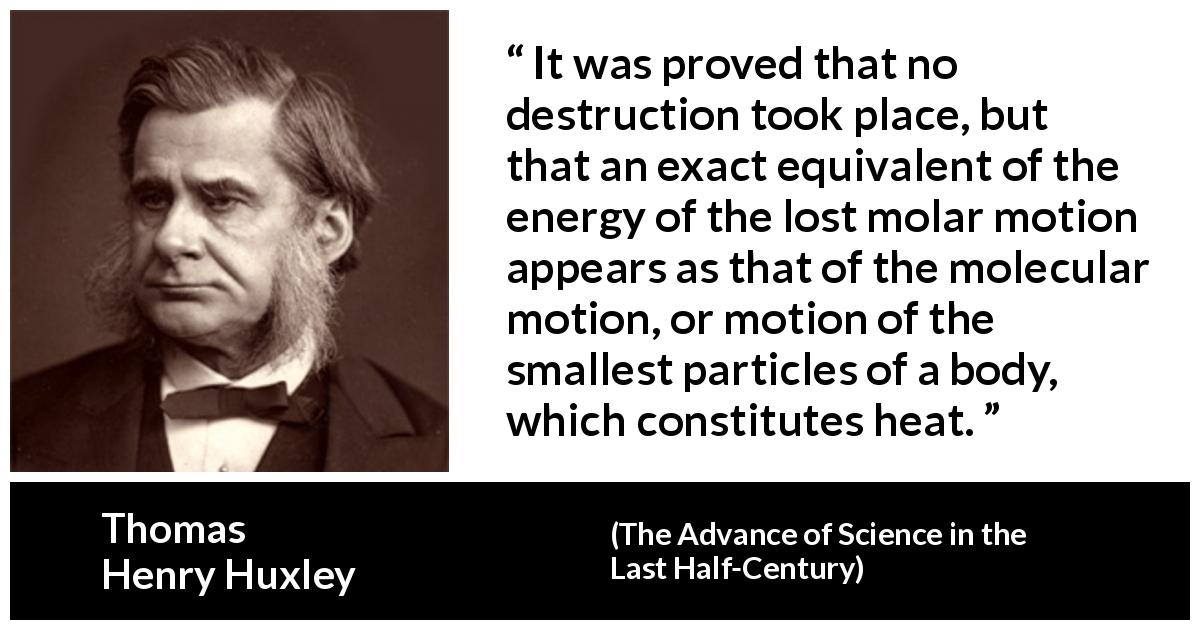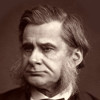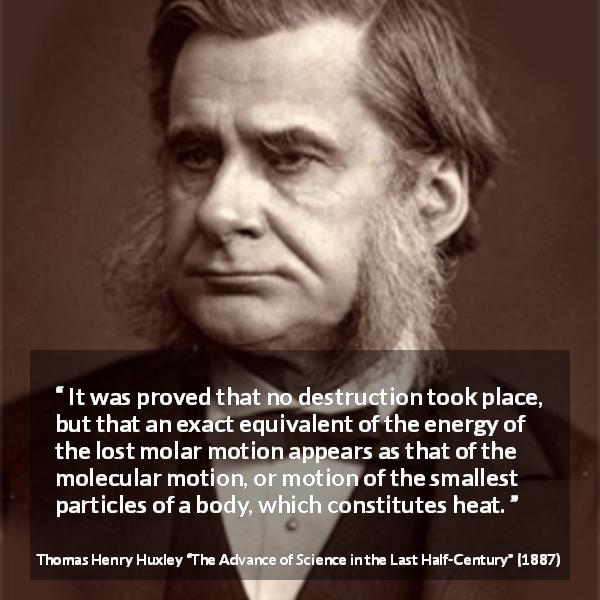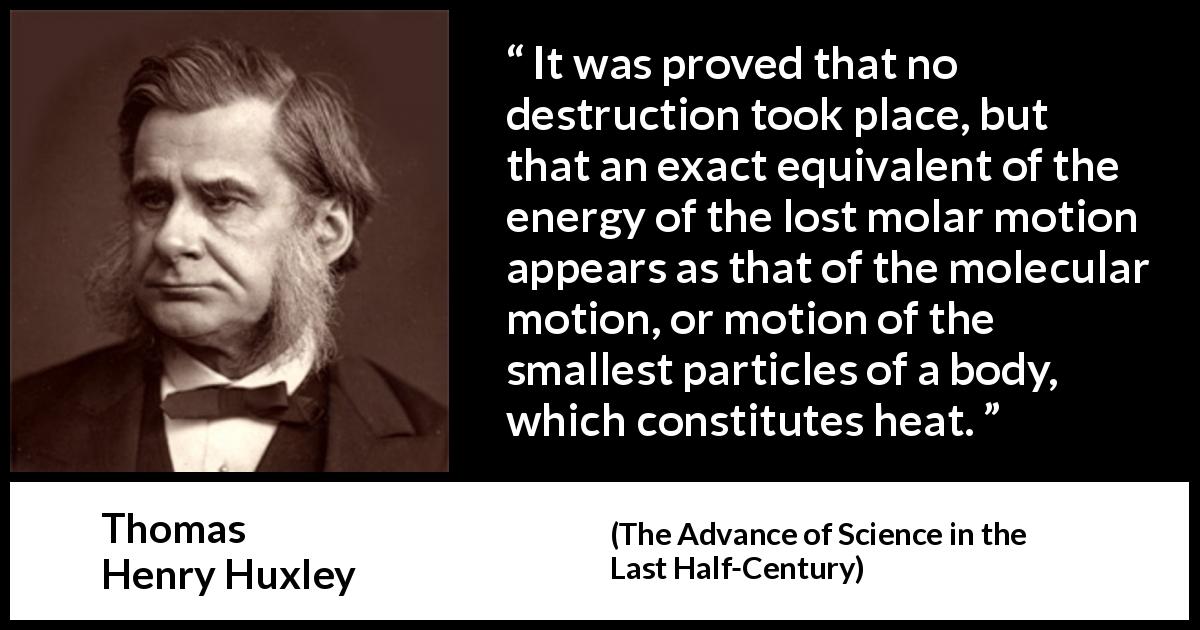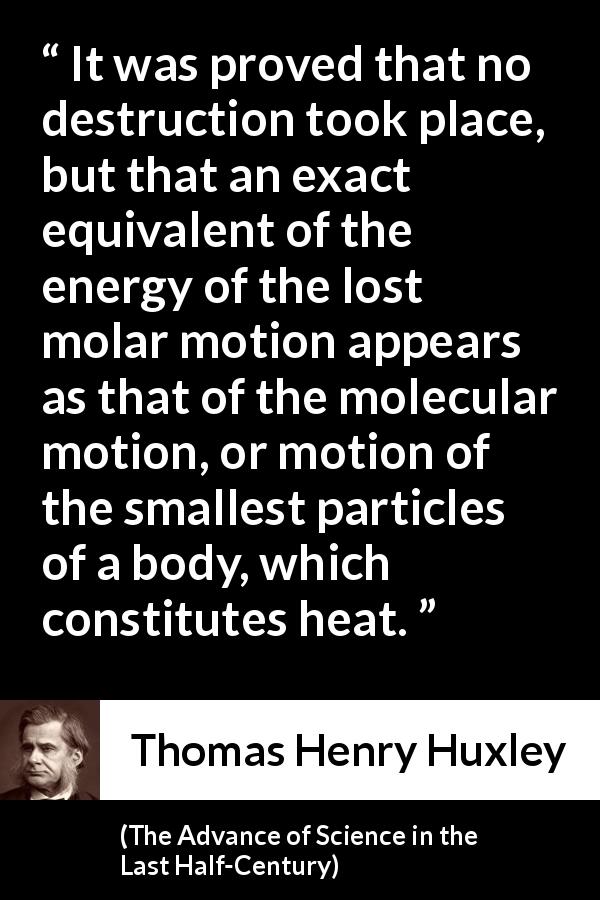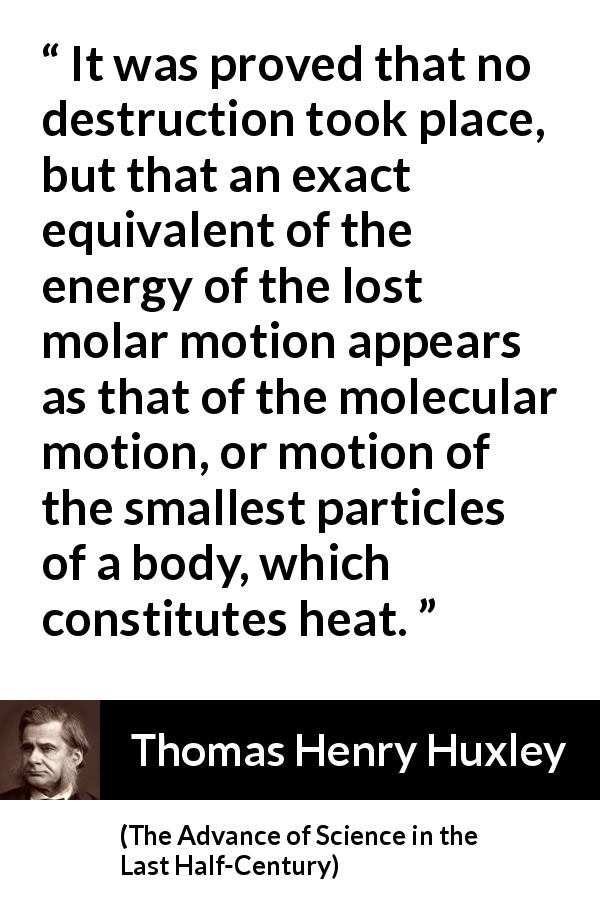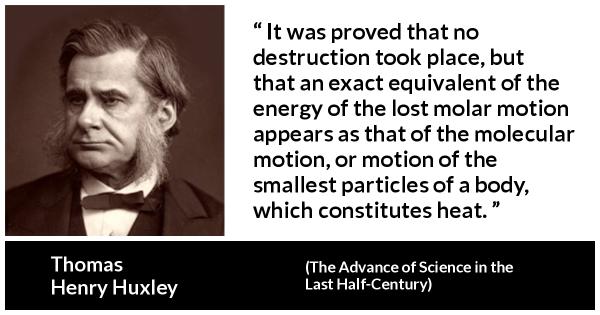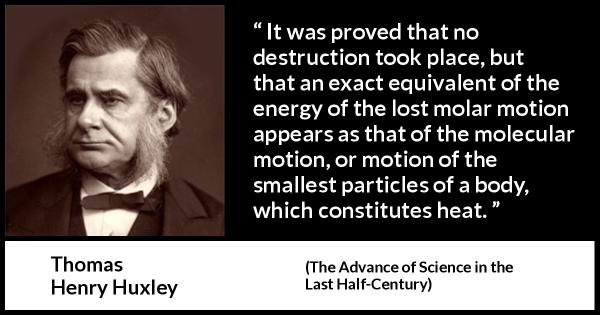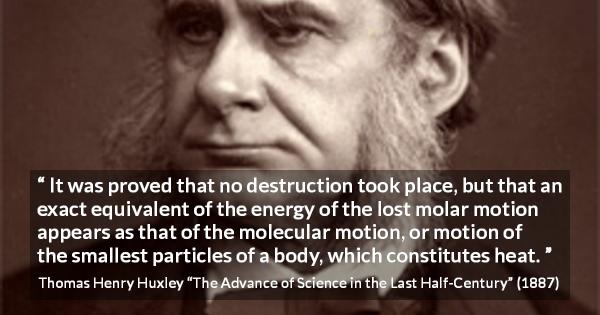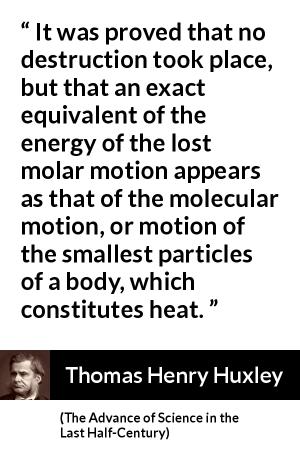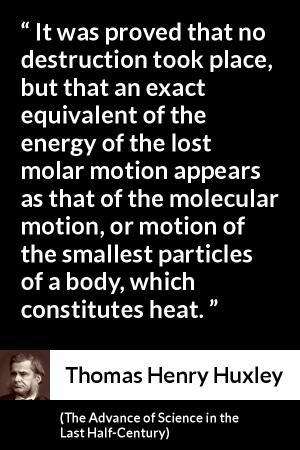“ It was proved that no destruction took place, but that an exact equivalent of the energy of the lost molar motion appears as that of the molecular motion, or motion of the smallest particles of a body, which constitutes heat. ”
Thomas Henry Huxley, The Advance of Science in the Last Half-Century (1887). copy citation
| Author | Thomas Henry Huxley |
|---|---|
| Source | The Advance of Science in the Last Half-Century |
| Topic | motion heat particles |
| Date | 1887 |
| Language | English |
| Reference | |
| Note | |
| Weblink | http://www.gutenberg.org/files/15253/15253-h/15253-h.htm |
Context
“This result brought philosophers face to face with the contradiction of supposing that a finite body could contain an infinite quantity of another body; but it was not until 1843, that clear and unquestionable experimental proof was given of the fact that there is a definite relation between mechanical work and heat; that so much work always gives rise, under the same conditions, to so much heat, and so much heat to so much mechanical work. Thus originated the mechanical theory of heat, which became the starting-point of the modern doctrine of the conservation of energy. Molar motion had appeared to be destroyed by friction. It was proved that no destruction took place, but that an exact equivalent of the energy of the lost molar motion appears as that of the molecular motion, or motion of the smallest particles of a body, which constitutes heat. The loss of the masses is the gain of their particles.
Earlier approaches towards doctrine of conservation.
Before 1843, however, the doctrine of conservation of energy had been approached Bacon's chief contribution to positive science is the happy guess (for the context shows that it was little more) that heat may be a mode of motion; Descartes affirmed the quantity of motion in the world to be constant; Newton nearly gave expression to the complete theorem; while Rumford's and Davy's experiments suggested, though they did not prove, the equivalency of mechanical and thermal energy.” source
Earlier approaches towards doctrine of conservation.
Before 1843, however, the doctrine of conservation of energy had been approached Bacon's chief contribution to positive science is the happy guess (for the context shows that it was little more) that heat may be a mode of motion; Descartes affirmed the quantity of motion in the world to be constant; Newton nearly gave expression to the complete theorem; while Rumford's and Davy's experiments suggested, though they did not prove, the equivalency of mechanical and thermal energy.” source
